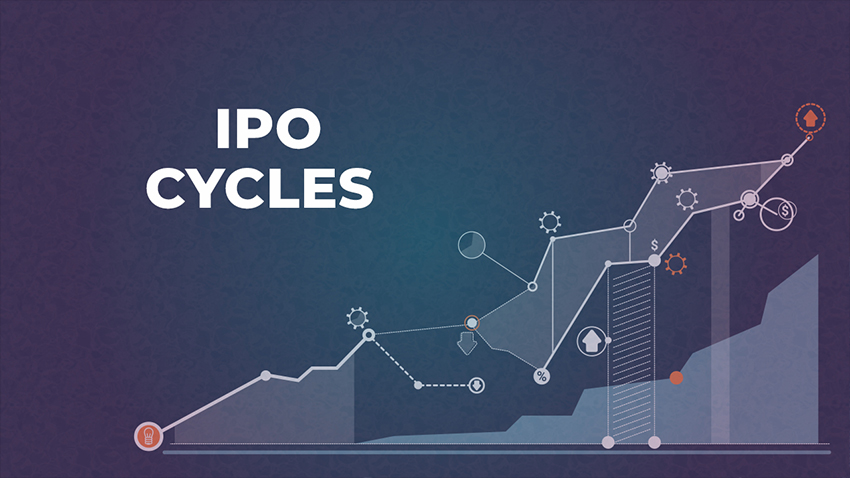
A company first makes its particular stocks available through an initial Public Offering (IPO). Businesses transition from being ‘private’ to ‘public’ in this manner. In other words, a previously privately held business after the Initial Public Offering turns into a publicly traded business. A stock exchange gives you, as an investor, direct access to the company’s shares. By purchasing these shares, you join the company’s shareholder base.
LIC, a major insurer, has released an IPO. TATA Technologies and Tata Play, which is now privately held, also intend to go public in the near future.
A public listing increases the company’s ability to raise cash and increases value for its current owners. Let’s unravel what the IPO cycle is.
Table of Contents
IPO Cycle
The IPO cycle encompasses the complete set of procedures and phases through which a privately held company transitions into a publicly traded entity. Essentially, the IPO cycle refers to the various steps taken by a company to shift from private ownership by a specific group of investors to making its shares available to the public through a stock exchange.
The IPO Cycle Process
Step 1: Engagement of Underwriter
The IPO process commences with the selection of an investment banker who acts as an underwriter. The underwriter evaluates the market, financials, and company fundamentals, formalising the arrangement through an underwriter agreement.
Step 2: Drafting the DRHP
Private companies planning IPOs must file Draft Red Herring Prospectuses (DRHPs) with the Securities and Exchange Board of India (SEBI). This document encompasses comprehensive information about the IPO and the issuing company, including financials, strengths, weaknesses, and estimated IPO size. Underwriters aid in preparing the DRHP.
Step 3: SEBI Approval
SEBI approval is required for the DRHP. The market regulator reviews the draft papers and either approves or denies the IPO application based on the provided details.
Step 4: Marketing
Upon receiving SEBI’s approval, the company initiates IPO marketing. This may involve a nationwide roadshow, media advertising, and visits to major commercial centres to attract High Net-worth Investors (HNIs) and communicate the company’s growth prospects.
Step 5: Price Band Determination
The next step involves setting a price range for the IPO, within which potential investors can place bids. The price band is determined in consultation with the underwriter, considering factors such as the company’s fundamentals and growth potential.
Step 6: Investor Bidding
Once the price band is decided, the IPO opens for public bidding. During this period, investors submit bids for IPO shares.
Step 7: Share Allotment
After the bidding period closes, the company begins the share allotment process. In an undersubscribed IPO, all subscribers receive shares, while in an oversubscribed scenario, the allotment may be determined through a lottery.
Step 8: Listing
Listing occurs after the completion of the bidding process and share allocation. Once listed, shares become freely tradable on secondary markets.
Benefits of the IPO Cycle
- A company that goes through an IPO cycle can develop its brand and reputation by going public, which improves its visibility.
- An IPO gives a business access to funds that may be used for development and growth.
- When a firm goes public, its founders, early backers, and staff can sell their shares and get a return on their investment.
- Going public necessitates regular and thorough financial reporting, enhancing a company’s financial accountability and discipline.
- A profitable IPO can considerably raise a company’s valuation, giving it more authority and negotiating strength.
- A company can more easily recruit and keep top personnel if it goes public because employees may be more drawn to a publicly traded company with a better profile.
- Being publicly traded can give a business and its goods more legitimacy and access to a larger network of clients, partners, and suppliers.
- By becoming publicly traded, a business can continue raising money by issuing more shares.
These advantages may contribute to a company’s development and success, as well as to a rising stock price and improved financial results over time. Companies should also thoroughly examine the dangers and difficulties associated with going through an IPO before opting to go public.
Drawbacks of an IPO Cycle
Some drawbacks of an IPO cycle include:
1. Financial Implications:
One significant disadvantage is the substantial cost associated with the IPO cycle. The expenses related to listing shares on a stock exchange, as well as ongoing financial responsibilities like compliance and auditing, can impose a significant financial burden on companies.
2. Increased Operational Demands:
Publicly listed companies may find themselves compelled to hire additional personnel to manage the heightened level of public scrutiny. This necessitated increase in staffing can place a strain on the company’s operational resources.
3. Time Commitment:
Another potential drawback is the considerable time commitment involved in the IPO process. The extensive regulatory procedures, documentation, and compliance requirements demand a substantial investment of time, diverting attention from day-to-day business operations.
Conclusion
The IPO cycle covers the steps a business must take to complete an IPO. Investors should carefully review the DRHP and make informed bids. It’s now as simple to subscribe to the IPO of a company as it is to purchase clothing online. For instance, trading via the Share India mobile app is effortless and convenient.